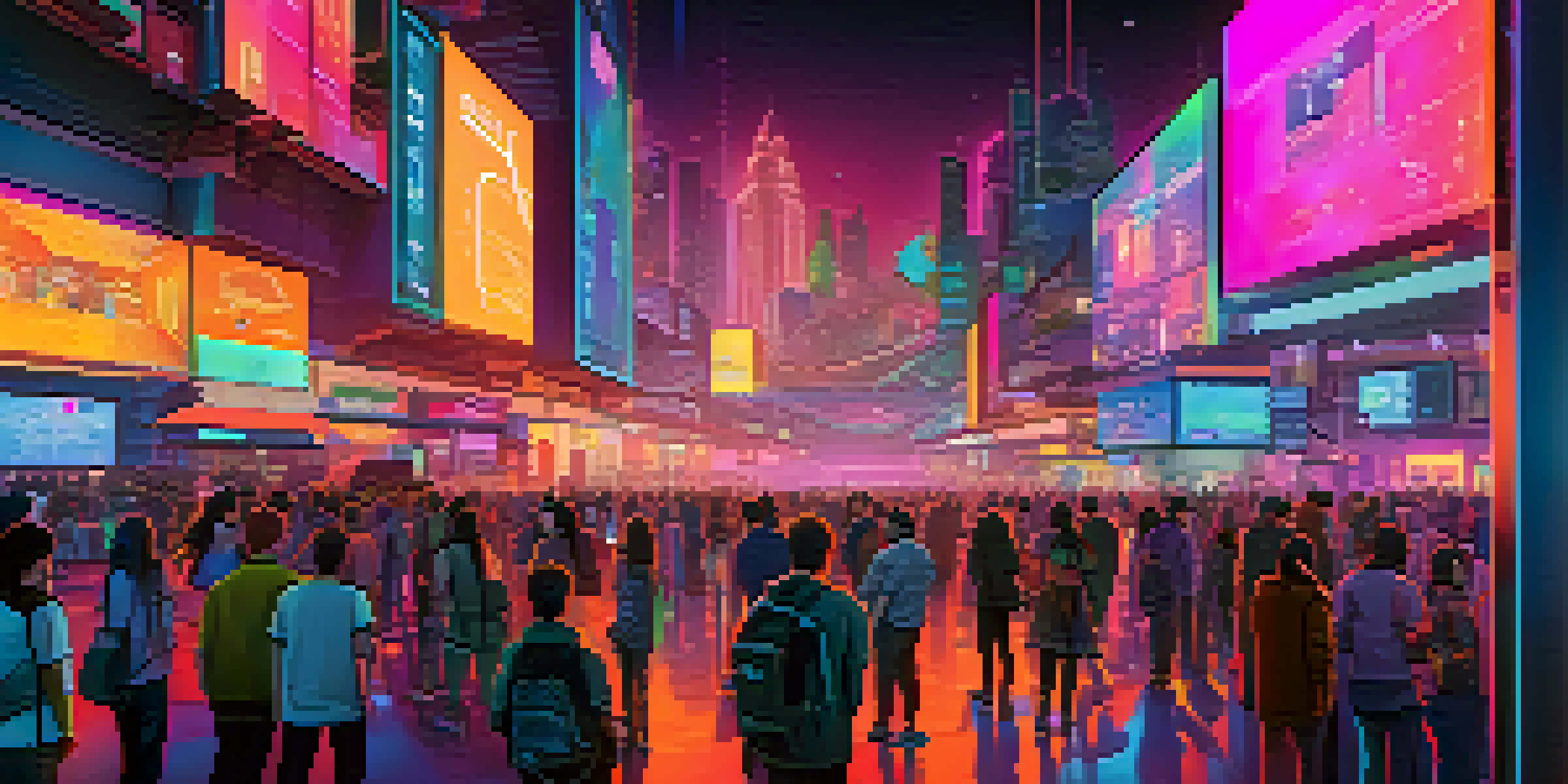NFT Marketplaces: Economic Models Driving Their Success

Understanding the Basics of NFT Marketplaces
NFT marketplaces are digital platforms that facilitate the buying, selling, and trading of non-fungible tokens (NFTs). Unlike cryptocurrencies such as Bitcoin, NFTs are unique digital assets representing ownership of specific items like art, music, or virtual real estate. This uniqueness is crucial for collectors and investors who value scarcity and provenance in their purchases.
The only thing that is constant is change, and those who can adapt will thrive.
The popularity of NFTs has exploded in recent years, drawing attention from artists, creators, and brands looking to leverage this new technology. As more people enter the space, NFT marketplaces have become pivotal in connecting sellers with buyers. Understanding how these platforms operate is essential for anyone looking to navigate the NFT landscape.
In essence, NFT marketplaces serve as the bridges that allow digital assets to be traded securely and transparently, utilizing blockchain technology. This transparency builds trust among users, which is vital for the overall health of the marketplace ecosystem.
The Role of Economic Models in NFT Marketplaces
Economic models are frameworks that describe how participants in a marketplace interact and transact. For NFT marketplaces, these models dictate pricing, supply and demand, and the overall user experience. By understanding these economic principles, we can better appreciate what drives the success of these platforms.

For instance, different marketplaces may adopt unique pricing strategies, such as auction-based sales or fixed pricing. This influences how buyers perceive value and can significantly impact transaction volumes. The choice of economic model also affects the incentives for both buyers and sellers, shaping how they engage with the platform.
NFT Marketplaces Connect Buyers & Sellers
NFT marketplaces serve as digital platforms that facilitate the buying, selling, and trading of unique digital assets, enhancing transparency and trust.
Moreover, economic models help marketplaces adapt to changing market conditions. By analyzing user behavior and transaction data, platforms can modify their strategies to enhance user satisfaction and encourage more trading activity. This adaptability is crucial for sustaining long-term growth in the competitive NFT space.
Transaction Fees: A Key Revenue Stream
Transaction fees are a primary source of revenue for NFT marketplaces and play a significant role in their economic models. These fees are typically charged as a percentage of the sale price and can vary between platforms. Understanding how these fees work is essential for both buyers and sellers navigating the NFT landscape.
Innovation distinguishes between a leader and a follower.
For example, some marketplaces may charge lower fees to attract more users, while others might implement tiered pricing based on the transaction size. This can influence user behavior, as sellers may choose platforms based on their fee structures. A well-balanced fee model can enhance user loyalty and reduce churn.
Additionally, transaction fees can be reinvested into the platform to improve services, such as enhancing security measures or providing better user interfaces. This creates a cycle where both the marketplace and its users benefit, ultimately driving more transactions and fostering long-term growth.
Scarcity and Value: The Psychological Factors
The concepts of scarcity and value are deeply intertwined in the world of NFTs. Scarcity refers to the limited availability of a digital asset, which can significantly impact its perceived value in the marketplace. When buyers believe an item is rare or exclusive, they may be willing to pay a premium for it.
For instance, limited edition NFTs or those associated with well-known artists often command higher prices due to their scarcity. This phenomenon illustrates how psychological factors influence buying decisions, making it crucial for marketplaces to highlight the unique characteristics of their offerings.
Economic Models Shape User Experience
The economic frameworks of NFT marketplaces influence pricing strategies and user interactions, impacting transaction volumes and overall platform success.
Moreover, the marketplace can leverage this psychology by creating features that emphasize scarcity, such as countdown timers on auctions or highlighting the number of editions available. This not only creates a sense of urgency but also enhances user engagement, ultimately driving sales.
Community Engagement: Building Loyalty in NFT Marketplaces
Community engagement is critical for the success of NFT marketplaces. Building a loyal user base involves fostering connections among artists, collectors, and fans. When users feel a sense of belonging to a community, they are more likely to return and participate in transactions.
Many marketplaces encourage community engagement through forums, social media groups, and events, where users can share experiences and showcase their collections. This interaction not only enhances user satisfaction but also drives organic growth as users recommend the platform to others.
Additionally, marketplaces can implement loyalty programs or rewards for active participants, further incentivizing engagement. By prioritizing community-building efforts, NFT marketplaces can create a vibrant ecosystem that contributes to their long-term success.
Interoperability: Connecting Different NFT Marketplaces
Interoperability refers to the ability of different NFT marketplaces to connect and interact seamlessly. This concept is vital in enhancing user experience, as it allows collectors to easily transfer their assets between platforms. When users can switch marketplaces without hassle, it encourages them to explore and engage more broadly with the NFT ecosystem.
For instance, if a user purchases an NFT on one platform, they should ideally be able to sell or display it on another without facing significant barriers. This interconnectedness not only expands the user base but also promotes healthy competition among marketplaces, driving innovation and improving services.
Community Engagement Drives Loyalty
Fostering connections within the NFT community enhances user satisfaction and loyalty, encouraging repeat transactions and organic growth.
Moreover, interoperability can lead to the creation of cross-platform events or collaborations, further enriching the NFT experience. This broader engagement ultimately benefits both users and marketplaces, fostering a more dynamic and inclusive digital art environment.
The Future of NFT Marketplaces: Trends to Watch
As the NFT space continues to evolve, several trends are shaping the future of marketplaces. One notable trend is the increasing focus on sustainability and eco-friendly practices, as the energy consumption of blockchain technology comes under scrutiny. Platforms that prioritize green initiatives may attract environmentally-conscious users and set themselves apart from competitors.
Another trend is the rise of fractionalized ownership, where users can buy shares of high-value NFTs, making them more accessible to a broader audience. This democratization of ownership can drive participation from various demographics, increasing overall market activity and engagement.

Lastly, advancements in technology, such as augmented reality (AR) and virtual reality (VR), are set to enhance the NFT experience. By integrating immersive technologies, marketplaces can create more interactive and engaging environments for users, paving the way for innovative approaches to digital asset trading.